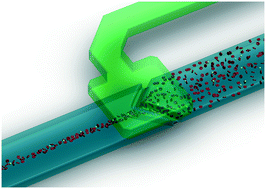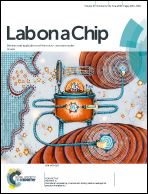Elastomeric microvalve geometry affects haemocompatibility†
Abstract
This paper reports on the parameters that determine the haemocompatibility of elastomeric microvalves for blood handling in microfluidic systems. Using a comprehensive investigation of blood function, we describe a hierarchy of haemocompatibility as a function of microvalve geometry and identify a “normally-closed” v-gate pneumatic microvalve design that minimally affects blood plasma fibrinogen and von Willebrand factor composition, minimises effects on erythrocyte structure and function, and limits effects on platelet activation and aggregation, while facilitating rapid switching control for blood sample delivery. We propose that the haemodynamic profile of valve gate geometries is a significant determinant of platelet-dependent biofouling and haemocompatibility. Overall our findings suggest that modification of microvalve gate geometry and consequently haemodynamic profile can improve haemocompatibility, while minimising the requirement for chemical or protein modification of microfluidic surfaces. This biological insight and approach may be harnessed to inform future haemocompatible microfluidic valve and component design, and is an advance towards lab-on-chip automation for blood based diagnostic systems.



 Please wait while we load your content...
Please wait while we load your content...